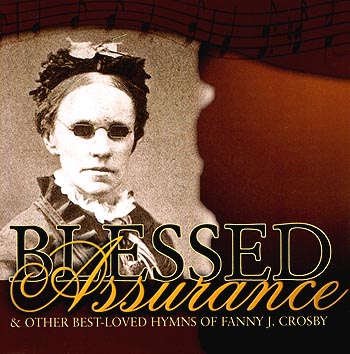10:00 Healing Service
Feast Day of John
Roberts, Priest, 1949
St. Philip’s In The
Hills Parish, Tucson, AZ
The Rev. Vicki K. Hesse
For online access to
the readings click here.
I speak to you in the
name of One God, Creator, Christ and Holy Spirit. Amen
Today
is the feast day of John Roberts, 1949.
What
do you know of him and his work?
The
various profiles offered describe John Roberts
as
one who grappled with his vocation,
which
was “ministering to only Christian people”
John
Roberts’ grappling resonates
with
so many of us – we can relate!
how
God was working in his heart,
with
a deep yearning for more connection,
more
meaning, more use of his faculties for God’s will.
After
growing up in Wales, JR
served briefly in the Bahamas.
He
asked to be sent to CO where he then worked with miners,
and
in a small pox hospital,
and
then he went to the Wind River Range in WY in
1883.
There,
JR learned the languages of
the
Shoshone (mountain- people) and
the
Arapahoe (plains- people).
He
learned their languages and recorded their vocabulary
for
future generations of English-speakers
as
well as Native peoples
to
learn each others’ languages.
JR
thirsted in his vocation;
he
saw others’ pain and had the gift of language
to
share God’s love.
This
strange journey to which he was called
certainly
had its share of
misunderstanding,
resistance and conflict.
Perhaps
that is why the texts for today
from
GJohn include those three components – misunderstanding, resistance and
conflict.
The
context of the passage from GJohn begins with
“the
festival, the great day.”
This
festival, in Jewish context,
was
the Feast of the Tabernacles,
commemorating
God’s protection of Israel
at
their times in the wilderness.
For
six days, the Israelite priests carried waster
from
the pool of Siloam to the water gate of Jerusalem.
Then,
that special water was
poured
out as a libation on their altar.
On
The Great Day, the last day of the 8-day ritual,
there
was a time of solemn worship
after
a procession is made around the altar seven times and
there
is a waving of branches and chanting.
In
this context, The Great Day, Jesus cries out,
“Let anyone who is thirsty come to me, 38
and let the one who believes in me drink.
As the scripture has said,
‘Out of the believer’s heart shall flow rivers
of living water.’” 39
J and his disciples observe The Great Day and
all the rites to which the people consider as meaningful.
Yet in his crying out, we can also understand
that he is reframing the meaning of it all
–
the
whole scene –
because The Word is now in the world.
J’s presence changes everything about being
thirsty and
from where one shall drink to be quenched.
As J speaks these words, the people are
perplexed.
There is misunderstanding,
there is resistance,
there is conflict.
There goes J again, kicking up the dust.
The people gathered react. Wait, what? Is this
The Messiah? It’s difficult to see in Jesus a new understanding
of God in the world.
The people resist Jesus and judge him
according to pre-existing systems and
structures
that continue to fuel misunderstanding.
I wonder – are we not like people of all time?
Do we allow moments of misunderstanding,
resistance and conflict
to show us God’s grace?
In these critical times of emotional and
spiritual upheaval,
do we squirm and try to get out of the
discomfort?
For the people gathered there for the Festival
of Tabernacles,
that moment that Jesus spoke revealed something
new
about God and about humanity’s relationship to
God.
Jesus cried out that He was the living water,
the real presence of God that quenches thirst,
because he was God. The water was not.
In our moments of misunderstanding, resistance
and conflict,
when we seek healing and wholeness,
when we seek relief from grief and loss,
when we thirst for meaning for our lives, Jesus
cries out to us.
Jesus
invites us to believe – or beLOVE him and
to drink in his love.
Through those messy moments,
Jesus invites us to see and experience
something new about God.
In Jesus, there is compassion, there is grace,
there is the deep hope in this community here
gathered,
as we realize that our neighbors really do care
about us,
that we are not alone when we gather as God
calls us.
*pause*
There is an artist named Sark,
who writes these wonderful DIY Creativity books.
One of them is called “A Creative Companion:
How to free your creative spirit.”[1]
This book invites the reader to follow their
inner artist.
She reminds us that creativity is fueled by
difficult moments, when there is resistance or even fear.
And when we are vulnerable.
She makes this recommendation:
“Invite someone dangerous to Tea.”
Now you can decide what is “dangerous” to you,
but this kind of invitation speaks to the power
of
jumping directly into the mess,
in the promise that it is in the mess
where God’s love is directly revealed.
Today, JR offers his messy,
vocation-grappling life to us
as an offer to see God’s grace in his
life,
as hope that God’s grace also pours onto our
life
to heal, make whole, bind up and reconcile all
that is misunderstood, resistant or in conflict.
God, in Jesus, is the living water,
the drink that quenches our blessedly messy
lifes.
Today, may you know God’s love in all of it.
Amen.
[1] Online
at Amazon at http://www.amazon.com/Sarks-New-Creative-Companion-Spirit/dp/1587612348/ref=sr_1_1?s=books&ie=UTF8&qid=1393335537&sr=1-1&keywords=sark+a+creative+companion cited on February 25, 2014

